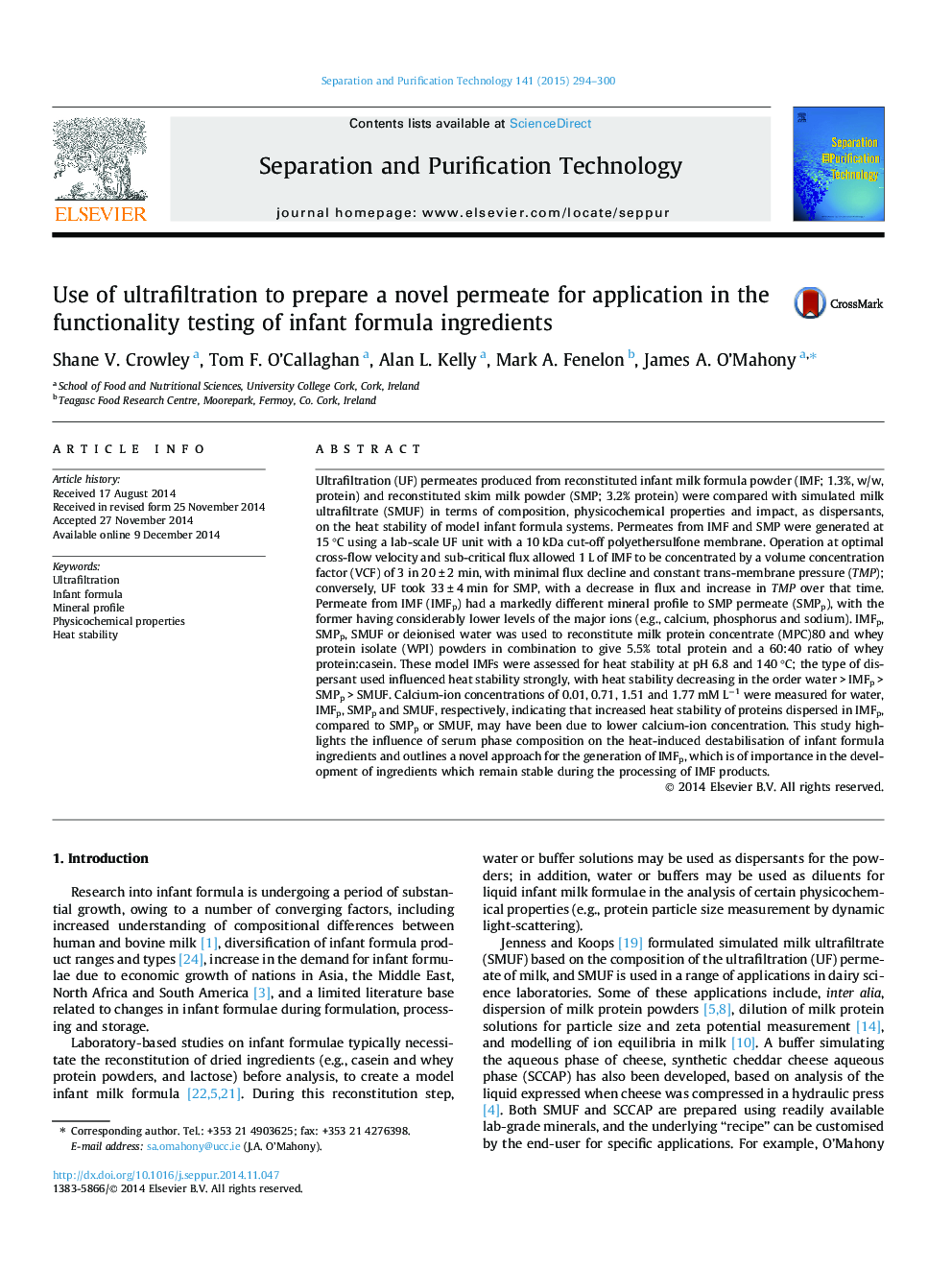| Article ID | Journal | Published Year | Pages | File Type |
|---|---|---|---|---|
| 640684 | Separation and Purification Technology | 2015 | 7 Pages |
•Permeate from infant milk formula (IMFp) was made using ultrafiltration (UF).•IMFp was compared to skim milk ultrafiltrate and simulated milk ultrafiltrate.•The mineral profile of IMFp was markedly different to these other systems.•All systems were used to reconstitute a model infant milk formula (IMF).•Differences in mineral profile affected the heat stability of the model IMF.
Ultrafiltration (UF) permeates produced from reconstituted infant milk formula powder (IMF; 1.3%, w/w, protein) and reconstituted skim milk powder (SMP; 3.2% protein) were compared with simulated milk ultrafiltrate (SMUF) in terms of composition, physicochemical properties and impact, as dispersants, on the heat stability of model infant formula systems. Permeates from IMF and SMP were generated at 15 °C using a lab-scale UF unit with a 10 kDa cut-off polyethersulfone membrane. Operation at optimal cross-flow velocity and sub-critical flux allowed 1 L of IMF to be concentrated by a volume concentration factor (VCF) of 3 in 20 ± 2 min, with minimal flux decline and constant trans-membrane pressure (TMP); conversely, UF took 33 ± 4 min for SMP, with a decrease in flux and increase in TMP over that time. Permeate from IMF (IMFp) had a markedly different mineral profile to SMP permeate (SMPp), with the former having considerably lower levels of the major ions (e.g., calcium, phosphorus and sodium). IMFp, SMPp, SMUF or deionised water was used to reconstitute milk protein concentrate (MPC)80 and whey protein isolate (WPI) powders in combination to give 5.5% total protein and a 60:40 ratio of whey protein:casein. These model IMFs were assessed for heat stability at pH 6.8 and 140 °C; the type of dispersant used influenced heat stability strongly, with heat stability decreasing in the order water > IMFp > SMPp > SMUF. Calcium-ion concentrations of 0.01, 0.71, 1.51 and 1.77 mM L−1 were measured for water, IMFp, SMPp and SMUF, respectively, indicating that increased heat stability of proteins dispersed in IMFp, compared to SMPp or SMUF, may have been due to lower calcium-ion concentration. This study highlights the influence of serum phase composition on the heat-induced destabilisation of infant formula ingredients and outlines a novel approach for the generation of IMFp, which is of importance in the development of ingredients which remain stable during the processing of IMF products.
